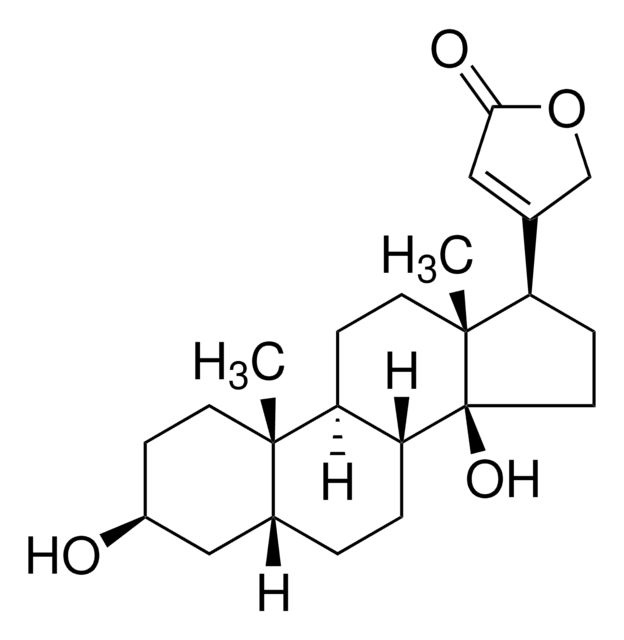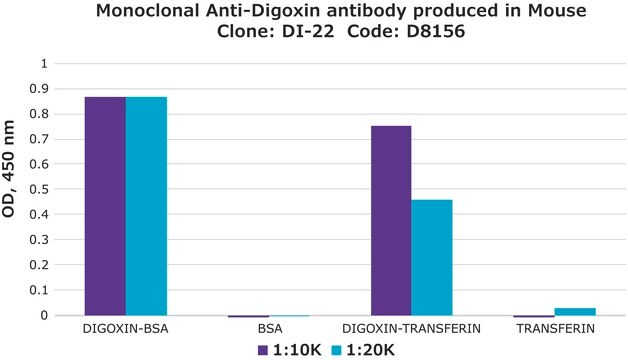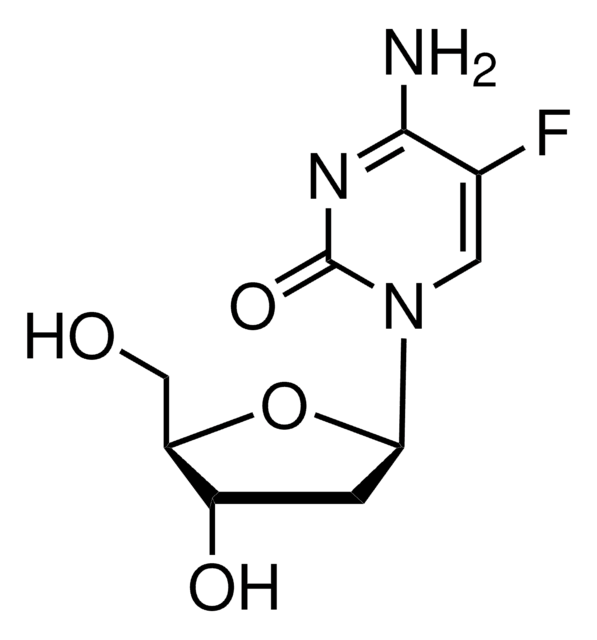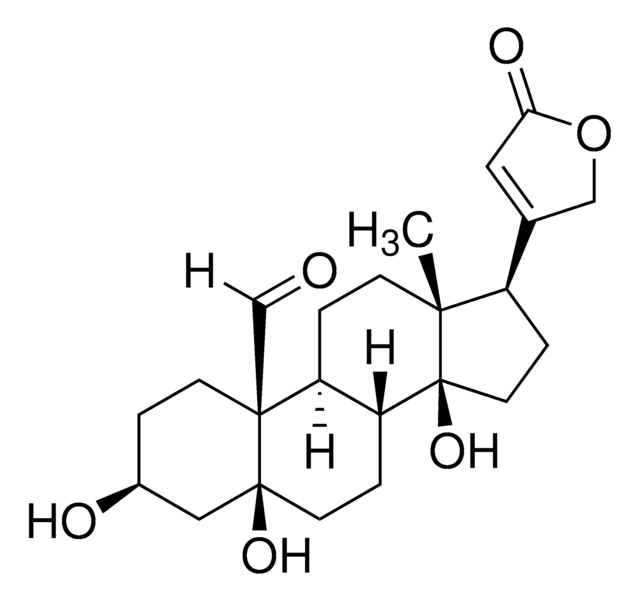Kluczowe dokumenty
D9026
Digoxigenin
analytical standard
Synonim(y):
3β,12β,14β,21-Tetrahydroxy-20(22)-norcholenic acid lactone, 3β,12β,14-Trihydroxy-5β,20(22)-cardenolide, 5β,20(22)-Cardenolide-3β,12β,14-triol, Lanadigigenin
About This Item
Polecane produkty
klasa czystości
analytical standard
Poziom jakości
agency
EPA 1694
Próba
≥98% (HPLC)
metody
HPLC: suitable
gas chromatography (GC): suitable
mp
222 °C (lit.)
Zastosowanie
environmental
food and beverages
forensics and toxicology
veterinary
Format
neat
grupa funkcyjna
ketone
temp. przechowywania
room temp
ciąg SMILES
C[C@]12CC[C@H](O)C[C@H]1CC[C@@H]3[C@@H]2C[C@@H](O)[C@]4(C)[C@H](CC[C@]34O)C5=CC(=O)OC5
InChI
1S/C23H34O5/c1-21-7-5-15(24)10-14(21)3-4-17-18(21)11-19(25)22(2)16(6-8-23(17,22)27)13-9-20(26)28-12-13/h9,14-19,24-25,27H,3-8,10-12H2,1-2H3/t14-,15+,16-,17-,18+,19-,21+,22+,23+/m1/s1
Klucz InChI
SHIBSTMRCDJXLN-KCZCNTNESA-N
Szukasz podobnych produktów? Odwiedź Przewodnik dotyczący porównywania produktów
Opis ogólny
Zastosowanie
Hasło ostrzegawcze
Danger
Zwroty wskazujące rodzaj zagrożenia
Zwroty wskazujące środki ostrożności
Klasyfikacja zagrożeń
Acute Tox. 1 Inhalation - Acute Tox. 1 Oral - Acute Tox. 2 Dermal
Kod klasy składowania
6.1A - Combustible acute toxic Cat. 1 and 2 / very toxic hazardous materials
Klasa zagrożenia wodnego (WGK)
WGK 3
Wybierz jedną z najnowszych wersji:
Masz już ten produkt?
Dokumenty związane z niedawno zakupionymi produktami zostały zamieszczone w Bibliotece dokumentów.
Klienci oglądali również te produkty
Nasz zespół naukowców ma doświadczenie we wszystkich obszarach badań, w tym w naukach przyrodniczych, materiałoznawstwie, syntezie chemicznej, chromatografii, analityce i wielu innych dziedzinach.
Skontaktuj się z zespołem ds. pomocy technicznej









